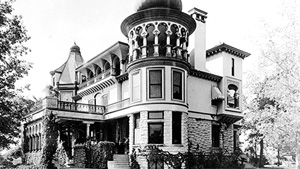By Susannah Clark
(Written for the purpose of helping to find documents in response to a request for information from Dallas County Pioneer Association.)
The Horton Cemetery was started as early as 1848 on the property of James Horton, my great great grandfather. It is believed it was started when his sister, Martha Horton Horton died. She was the wife of a cousin, William Horton.
So, if family cemeteries of that era were issued an original deed separate from James Horton’s land, that would be the time era. I don’t think that happened normally at the time.
This cemetery was used by the family and the last family burial was in 1956 – Susan C. J. Wright Horton, wife of Enoch Ellis Horton, son of James and Jane Phillips Horton. She was my great grandmother and much loved. She was 98 when she died.
Enoch “Nuck” Ellis Horton, Susan’s husband, died in an accident in 1906. At that time, some of the farmland was sold, but not the cemetery, the house property and the wheat fields. I have photos of the harvest in those fields by my grandfather, Earl Ellis Horton, who was born 1890. The photos are from the 1910-1936 time frame. The family lived in the home, built in 1852, until the mid-1930’s. Earl with his wife, daughters and his mother lived there. They rented out the house after that until it burned in 1956. He maintained the cemetery religiously and my mother remembered family days helping him and picnics, too. He died in 1977.
I have not found the deed which sold the house and probably the cemetery which may have happened in the 1960-1975 time frame. The new Arcadia school and library occupy where the house one stood so some kind of land transaction must have occurred.
The mobile home park and a right of way was established, I think in the 1960’s. Like Frances James, I agree that the cemetery belongs to the occupants. In this cemetery, we have a number of early Dallas County Pioneers and their descendants.
Susan Crissa Jane Wright Horton was the daughter of John William Wright and his second wife, Susan Watson Maulding Wright. John arrived in 1844 with his first wife and her father and siblings from Tennessee as Peters Colony members.. Their daughter was the first burial in the Oak Cliff Cemetery. Susan was his second wife and arrived in Texas at age 10 in Bowie County. A Bible names her as Susanna Alzada, which makes sense as one of her daughters was Alzada “Zadie” Maulding Jackson Mitchell. There are other names in the family which have ties into this union and her siblings. It is believed that while Martha Horton Horton was the first family burial, her parents, Enoch and Martha Stinson Horton, are also buried here. Enoch was the Peters Colony settler who established Eagle Ford. John Horton, brother to James, and his wife, Elizabeth Hopkins Horton, along with her parents, John and Margaret Fox Hopkins are buried here. All Peter’s Colony members. John and Elizabeth Horton’s children are buried here.
James’ sister, Jane “Jennie” Horton Bradshaw is believed to be buried here.
Enoch, Martha are the parents and James, John, Martha and Jennie are siblings to Sarah Horton Cockrell. (We know her as “Aunt Sally”!)
Most of the children of James and Jane Phillips Horton are buried here – young and older.
The Brannons, father and son, were not only friends of James Horton, but also served with him in the Civil War.
The neighbors well known to the Horton’s are buried here, so it became the last resting place for many who lived in the Eagle Ford and James Horton farm area.
Another section is located on the east side outside of the family fence and is known as the black cemetery. I have tried to locate as many obits, death certificates and family to help develop black neighbors buried here. It has been important to them and me to locate their family and name them. It was named Crestview Memorial Park and you might find some deed work under that name but should only reference the graves outside of the Horton Family Cemetery and not the Horton Family Cemetery itself.
A Texas Historical Marker was dedicated in 2001 and we really have no idea where that marker went. The verbiage on the marker was not historically correct, but I’d rather just find the marker. Frances James wanted to set it in concrete.


